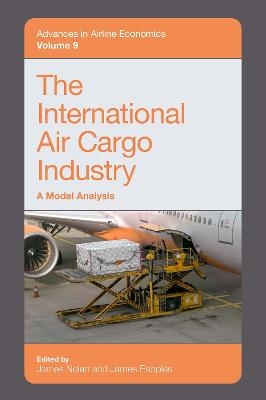
The International Air Cargo Industry
Emerald Publishing Limited (Verlag)
978-1-83909-212-1 (ISBN)
With the growth of just-in-time delivery and e-commerce, fast and efficient cargo delivery remains in high demand around the globe. Not so long ago, the air cargo mode was employed mostly to move higher valued goods. Open international trade, combined with scale/scope economies in air transport and the use of modern commercial jets means that now some formerly “bulky” commodities are moved by air, a modal choice that would have been unthinkable a generation ago. However, as it grows the industry is not without its controversies or detractors.
Employing various empirical techniques and modeling perspectives, the authors highlight the methods by which air cargo companies today provide effective and increasingly affordable services and how such services enhance economic growth, trade and development. The chapters cover three broad operational areas: costs and competitiveness, shipper services and air cargo company demand, and international competition and economic development. This volume provides the researcher with an updated “snapshot” of this international industry and provides governments with strong evidence that the development of an internationally competitive air cargo sector will likely continue to generate significant economic benefits across the globe.
James Nolan is a Professor in the Department of Agricultural and Resource Economics at the University of Saskatchewan. He publishes research covering a variety of modal transportation topics. Since 2015, James has served as editor of the Journal of the Transportation Research Forum (RETREC, Elsevier). James Peoples is Professor of Economics at the University of Wisconsin-Milwaukee. His research interest includes analysis of production efficiency for different modes of freight transportation, as well as analysis of labor market activity in transportation industries.
Chapter 1. Introduction and Overview of the International Air Cargo Industry: A Modal Analysis; James Nolan and James Peoples
Chapter 2. Modeling an Air Cargo Shipment Planning Problem Including Risk Factors, Consolidations, Integrations, and Divisible Activities; Mustafa Egemen Taner
Chapter 3. Analysing and Modelling Performances of Supply Chains Served by Air Cargo Carrier Networks; Milan Janić
Chapter 4. Productivity and Cost Patterns in the All-Cargo US Airline Sector; Zoe Laulederkind and James Peoples
Chapter 5. The Evolving Role and Scale of Cargo-Focused Hub Airports in the United States, 2003–2020; Joseph Schwieterman and Euan Hague
Chapter 6. Leveraging Geography and Operations for Competitive Advantage in Air Cargo: Challenges and Opportunities in Alaska; Darren J. Prokop
Chapter 7. The Airport Cargo Strategy Canvas: An Application to Brussels Airport (BRU); Thomas Van Asch, Wouter Dewulf, and EddyVan de Voorde
Chapter 8. Ireland’s Demand for Aircraft Assets and the Value of Flows in the International Trade in Goods Statistics: Estimating the Role of Domestic Carriers and the Air Cargo Industry; Dermot P. Coates and Conor Kelly
Chapter 9. Air Trade, Air Cargo Demand, and Network Analysis: Case of the United States; Chunyan Yu and Li Zou
Chapter 10. Plane to See? Empirical Analysis of the 1999-2006 Air Cargo Cartel; James Nolan and Zoe Laulederkind
Chapter 11. Implications of the Fifth Freedom Traffic Right for Air Cargo Transport in China; Tao Li
Chapter 12. Performance of Air Cargo Export to Promote Economic Diversification in Nigeria; Adedotun Joseph Adenigbo and Olayemi O. Simon-Oke
| Erscheinungsdatum | 15.09.2022 |
|---|---|
| Reihe/Serie | Advances in Airline Economics |
| Verlagsort | Bingley |
| Sprache | englisch |
| Maße | 152 x 229 mm |
| Gewicht | 596 g |
| Themenwelt | Technik ► Luft- / Raumfahrttechnik |
| Wirtschaft ► Volkswirtschaftslehre | |
| ISBN-10 | 1-83909-212-2 / 1839092122 |
| ISBN-13 | 978-1-83909-212-1 / 9781839092121 |
| Zustand | Neuware |
| Haben Sie eine Frage zum Produkt? |
aus dem Bereich


